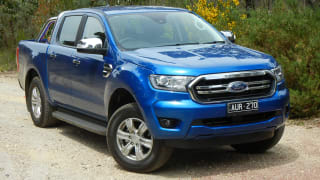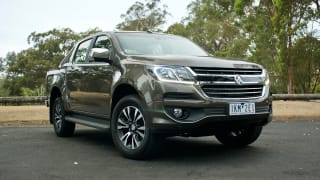The Triton's relatively light kerb weight can be felt when the vehicle is empty or lightly loaded, as its sprung weight on heavily patched or unsealed roads doesn't feel quite heavy enough to counter the vigorous movement of heavy-duty suspension designed to cope with a GCM of nearly six tonnes.
It can feel quite jittery at times over bumps and corrugations, without the more solid, surefooted feel of heavier utes. Firmer shocks could probably assist in this area. Its relatively short 3000mm wheelbase also provides sharper response to steering input, which is great when zipping around town but can keep the driver a bit busier on rough roads, as it has less directional stability than longer wheelbase rivals.
However, the Triton comes into its own with a big load on board, as the higher sprung weight tames the suspension movement and smooths out all but the biggest bumps. We discovered this by loading 830kg into the load tub, which with driver was just under the 951kg payload limit. The rear leaf springs only compressed 45mm (less than usual under these loadings) with ample bump-stop clearance. The nose rose 27mm, resulting in a near-level ride height.
At highway and freeway speeds the taller gearing of the new six-speed auto was immediately apparent, the Triton cruising along with only 1700rpm at 100km/h (versus 1950rpm with the five-speed we previously tested) and 1900rpm at 110km/h (versus 2100rpm).
"The Triton comes into its own with a big load on board."
This new powertrain combination also made light work of our 13 per cent gradient 2.0km long set climb at maximum GVM, easily maintaining the 60km/h speed limit in fourth gear (previously third) at 1700rpm all the way to the summit. This also displayed the engine's great flexibility, given peak torque at 2500rpm is tapped 800rpm further up the rev range.
Engine braking on the way down was excellent too, with such a large load on its back. In a manually-selected second gear, it reached 3800rpm on over-run (4000rpm redline) and did not exceed the 60km/h speed limit for most of the descent, requiring only one prod of the brakes on the steepest pinch. That's great engine braking for such a small capacity engine.
Although bump absorption under this maximum GVM loading greatly improved, it felt less sure-footed through some 80km/h corners due to a slight but noticeable pendulum effect under lateral loads caused by most of the payload (60kg more than last time) being carried behind the rear axle.






















